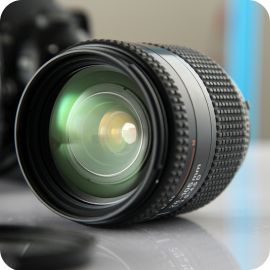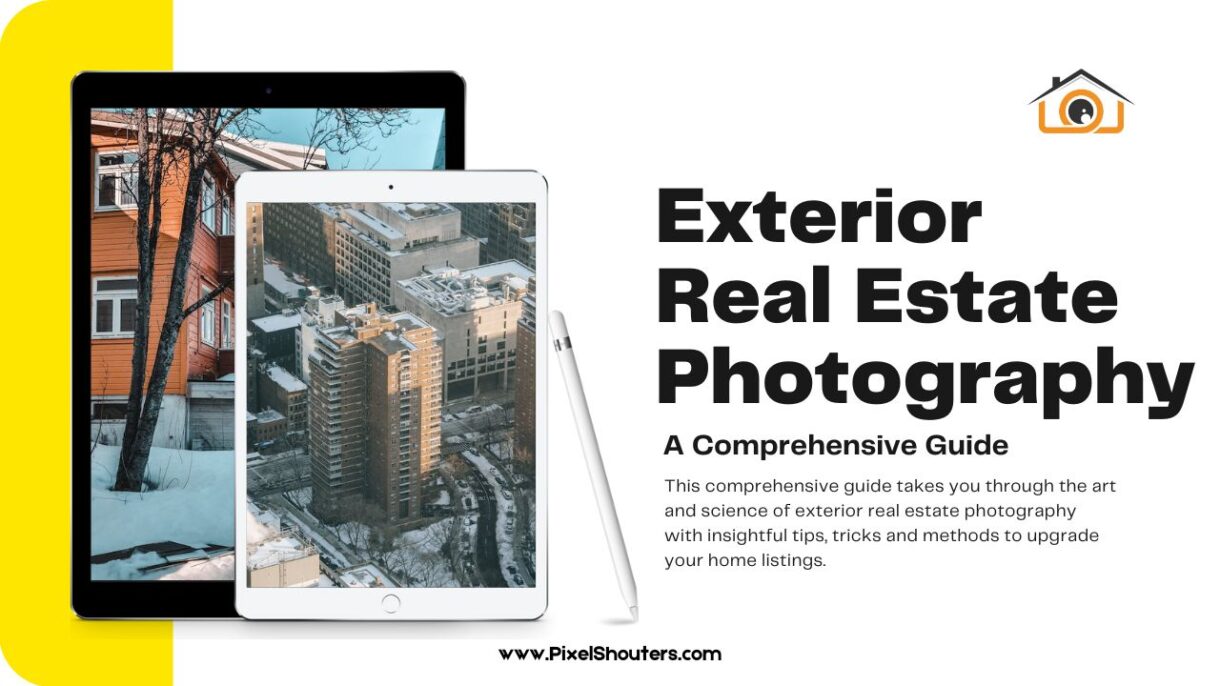Unlocking the Power of Exterior Real Estate Photography: A Comprehensive Guide
In the aggressive world of real estate, where a first impression can either make or break a deal, outdoor photos matter a lot. Potential clients always give their initial thoughts merely based on how much they like what they see in a property, and great outdoor photographs play a crucial role in capturing attention and generating interest. This comprehensive guide takes you through the art and science of exterior real estate photography with insightful tips, tricks and methods to upgrade your home listings.
Exterior Real Estate Photography Tips
Key Equipment and Tools
A. Camera Selection and Features
Selecting the right digital camera is fundamental to successful exterior real estate photography. Choose a camera with high resolution and dynamic range for effective capture of details and nuances. Think about features such as manual settings, bracketing and low-medium capabilities for versatility across different shooting situations.
B. Essential Lenses for Capturing Exteriors
Different lenses have different roles in real estate photography. A wide-angle lens is necessary for capturing large exteriors whereas a telephoto lens can provide sharp details for macro shots. Experiment with numerous lenses to find out the right combination for special situations.

C. Tripods and Stabilizers for Steady Shots
Stability is key to achieving sharp and professional-searching pictures. Invest in a sturdy tripod to take away camera shake, in particular in low-light conditions. For added mobility, consider a stabilizer or gimbal, specially when taking pictures pics on the pass.
D. Drone Photography for Unique Perspectives
Embrace the technological marvel of drone photography to show off houses from breathtaking aerial perspectives. Drones provide a compelling way to spotlight the asset’s surroundings, format, and length, providing ability shoppers with a complete view.
Pre-Shoot Preparation
A. Importance of Scouting the Property
Before selecting up your digital camera, thoroughly scout the property to perceive key angles, features, and potential challenges. Understanding the property’s particular traits permits you to plan your shots effectively and expect lighting situations.
B. Considering Lighting Conditions and Time of Day
Lighting plays a crucial role in photography, and exterior shots are no exception. Take advantage of the golden hour, just after sunrise or before sunset, to achieve warm and soft lighting. Avoid harsh midday sunlight, which can create shadows and overexposed areas.
C. Cleaning and Staging Tips for Better Curb Appeal
A well-maintained exterior significantly enhances a property’s curb appeal. Prioritize cleaning tasks, such as clearing debris, trimming bushes, and power washing surfaces. Strategically stage outdoor spaces to create inviting and aspirational scenes.
Composition Techniques
A. Rule of Thirds and Framing
Apply the rule of thirds to create visually appealing compositions. Place key elements like the main entrance or focal point along the imaginary grid lines. Utilize natural frames, such as trees or architectural features, to draw attention to the property.
B. Showcasing Key Architectural Features
Highlight the unique architectural elements that make the property stand out. Capture close-up shots of intricate details, such as a charming front door, decorative trim, or a stylish balcony. Emphasize these features to create a lasting impression.
Lighting Strategies
A. Utilizing Natural Light Effectively
Harness the power of natural light to enhance your exterior shots. Position yourself to take advantage of the available light, whether it’s the soft glow of sunrise or the warm hues of sunset. Be mindful of shadows and find angles that showcase the property in the best light.
B. Methods for Shooting During Various Times
Each time of day offers a unique lighting scenario. Experiment with morning, afternoon, and evening shots to capture the property in various atmospheres. Pay attention to the direction of light and how it interacts with the architectural features, creating depth and dimension.

C. Use of External Lighting Sources for Enhancement
In certain situations, external lighting sources can be employed to elevate your exterior real estate photography. Consider using artificial lighting to accentuate specific areas, such as highlighting a beautifully landscaped garden or emphasizing the architectural details of the facade.
Editing and Post-Processing
A. Overview of Common Editing Tools and Software
Post-processing is a crucial step in refining your exterior real estate photography. Get to know famous altering devices like Adobe Lightroom or Photoshop. These tools allow you to fine-tune exposure, color balance, and correct any distortions captured during the shoot.
B. Enhancing Colors, Contrast, and Sharpness
Bring out the vibrancy of the property by enhancing colors without over-saturation. Adjust contrast to ensure a balanced and visually appealing image. Sharpen key details to maintain clarity, but exercise restraint to avoid an artificial look.
C. Addressing Common Issues Such as Distortion or Lens Flare
Be vigilant for common issues that may arise during shooting, such as lens distortion or flare. Correcting these imperfections during post-processing ensures a polished and professional final result. Invest time in mastering these editing techniques for a consistent and high-quality portfolio.
Showcasing Property Features
A. Emphasizing Landscaping and Outdoor Spaces
Landscape features play a pivotal role in creating a compelling visual narrative for a property. Capture the beauty of well-maintained gardens, manicured lawns, and inviting exterior spaces. Frame shots that showcase the property’s potential for relaxation and enjoyment, making it easier for potential buyers to envision their future in the space.
B. Highlighting Architectural Details
Zoom in on architectural details that set the property apart. Whether it’s the intricate woodwork of a front porch, the stylish symmetry of windows, or a unique design element, these details add character and charm. Close-up shots provide a deeper appreciation for the craftsmanship of the property.
C. Capturing Seasonal Changes for Variety
Highlight the property’s adaptability to different seasons. Showcase vibrant spring blooms, warm summer afternoons, or the cozy charm of autumn. Providing a variety of seasonal shots not only keeps your portfolio fresh but also helps potential buyers imagine the property throughout the year.
Drone Photography in Real Estate
A. Advantages of Aerial Perspectives
Enter the realm of drone photography to capture stunning aerial perspectives. Drones offer a unique vantage point, allowing you to showcase the property in its entirety. Highlight expansive grounds, proximity to amenities, and the overall neighborhood layout to provide a comprehensive view.
B. Complying with Regulations and Safety Guidelines
Before taking flight, familiarize yourself with local regulations governing drone usage. Ensure compliance with safety guidelines to protect both your equipment and the privacy of the property’s occupants. Responsible drone operation adds a modern and captivating dimension to your real estate photography.

C. Showcasing Large Properties and Surrounding Areas
Drone photography is particularly advantageous for highlighting large properties and their surroundings. Capture expansive landscapes, nearby amenities, and the overall neighborhood. This not only provides potential buyers with a comprehensive understanding of the property but also showcases its connectivity and proximity to key locations.
Conclusion
In the dynamic world of real estate, the impact of exterior real estate photography cannot be overstated. As potential buyers scroll through countless listings, compelling visuals are the key to capturing attention and generating interest. By mastering the art of exterior real estate photography, you can elevate your property listings to new heights.
In this comprehensive guide, we’ve explored the essential equipment and tools, pre-shoot preparation techniques, composition strategies, and the importance of lighting in exterior photography. We’ve delved into the nuances of editing and post-processing, showcasing property features, and the exciting realm of drone photography.
Remember, each property has its unique story, and your role as a real estate photographer is to artfully tell that story through your lens. Pay attention to details, leverage natural light, and embrace technological advancements to present each property in its best light.
As you embark on your journey to master exterior real estate photography, continue to refine your skills, stay updated on industry trends, and adapt to the evolving needs of the market. By doing so, you not only enhance your professional portfolio but also contribute to the success of real estate transactions by providing captivating visuals that leave a lasting impression.
Here’s to creating stunning exterior real estate photos that turn potential buyers into delighted homeowners!
